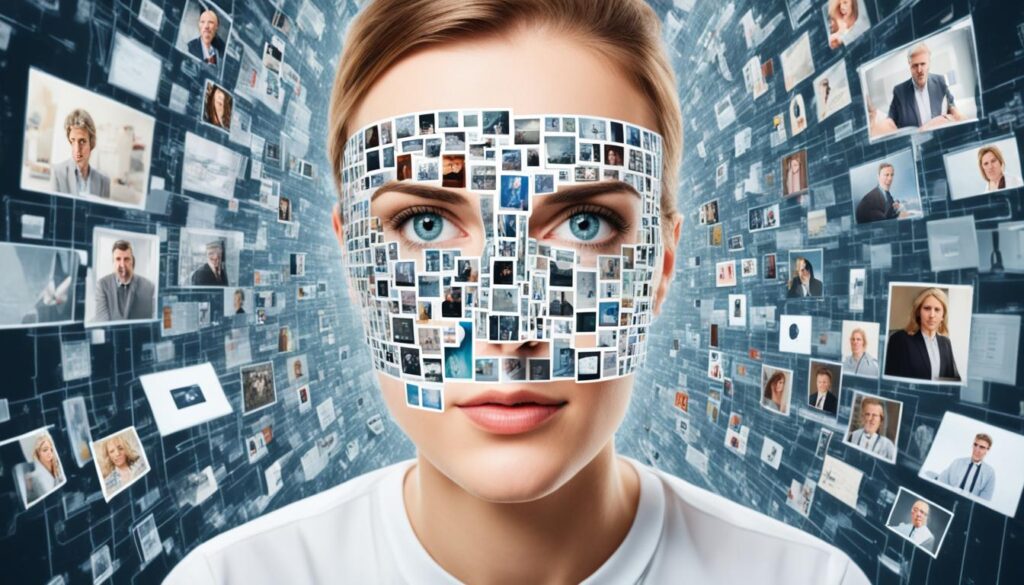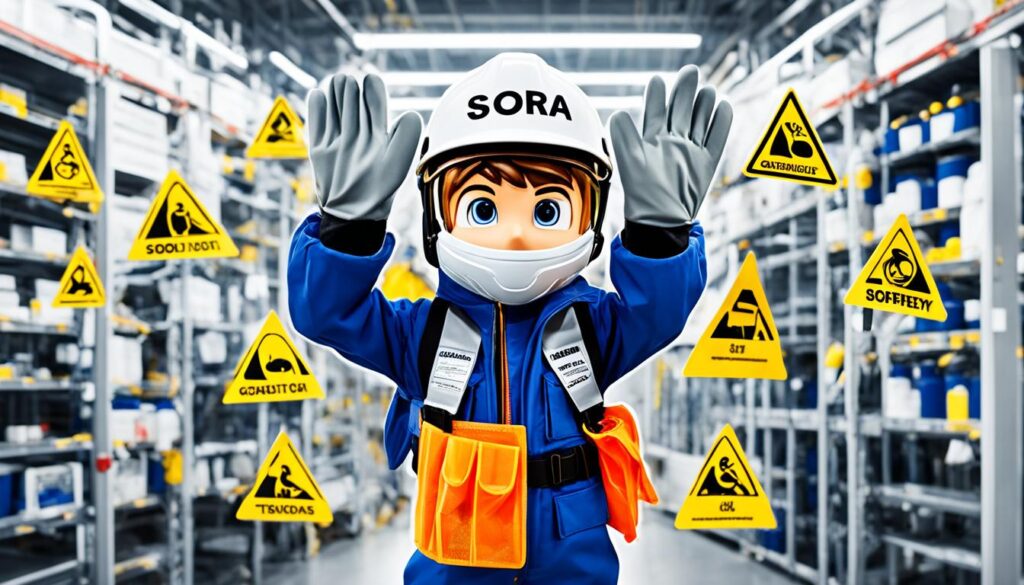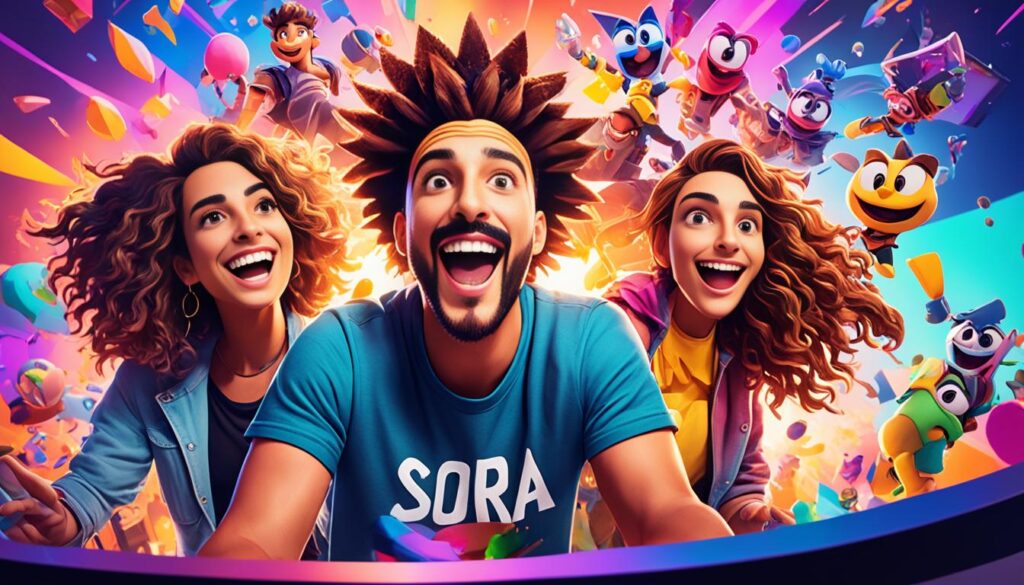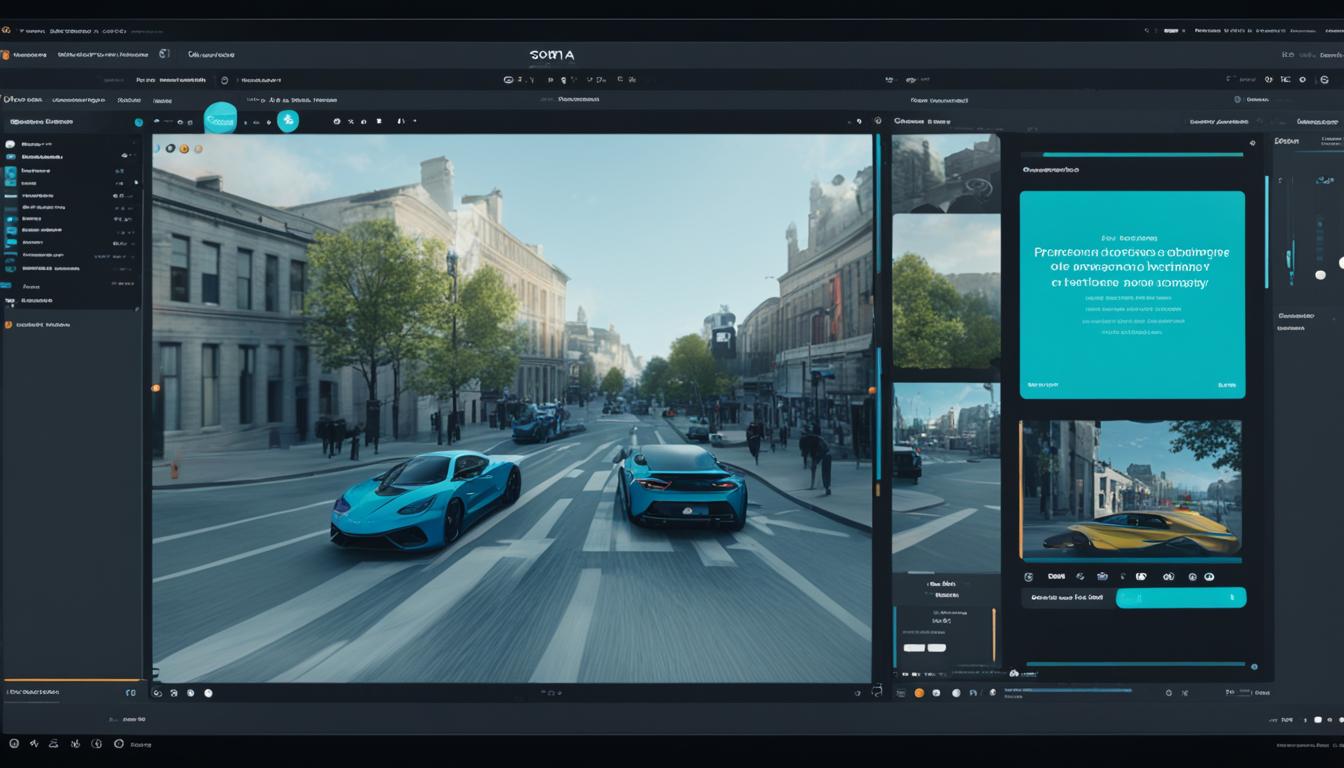Did you know that Sora, a text-to-video generator developed by OpenAI, has been causing ripples in the world of premiere and content creation? This groundbreaking tool has made significant advancements in generative AI and has garnered attention for its ability to create high-quality videos based on textual prompts. Let’s dive deeper into Sora’s influence on premiere insights and gain a unique perspective from creators themselves.
Table of Contents
- 1 What is Sora and How can it be Accessed?
- 2 Comparison with Other AI Video-Generating Tools
- 3 Ethical and Societal Implications of Sora
- 4 Safety Measures and Regulations for Sora
- 5 Implications for Content Creators and Artists
- 6 Conclusion
- 7 FAQ
- 7.1 What is Sora and how can it be accessed?
- 7.2 How does Sora compare to other AI video-generating tools?
- 7.3 What are the ethical and societal implications of Sora?
- 7.4 What safety measures and regulations are being implemented for Sora?
- 7.5 How does Sora impact content creators and artists?
- 7.6 What is the impact of Sora on premiere and content creation trends?
- 8 Source Links
What is Sora and How can it be Accessed?
Sora is a remarkable text-to-video generator developed by OpenAI that harnesses the power of generative AI. This cutting-edge technology enables the creation of videos up to 60 seconds long based on simple textual prompts. In addition to transforming text into captivating videos, Sora is also capable of generating videos from still images, expanding its artistic possibilities.
While Sora has not been released for public use at this time, OpenAI has graciously provided glimpses of its remarkable capabilities by sharing examples of Sora-generated videos. By engaging with policymakers and artists, OpenAI seeks to gather valuable feedback before the official release of this revolutionary tool.
With Sora, OpenAI is pushing the boundaries of text-to-video generation, and the potential applications of this technology are vast. The ability to transform plain text into visually stunning videos has the potential to revolutionize content creation and storytelling across various industries.
Unlocking Creative Potential with Sora
Sora’s ability to bring textual prompts to life opens new doors for creators and artists alike. With just a few simple prompts, Sora can generate narrative videos that expand the boundaries of traditional content creation. This powerful tool enhances the creative process, allowing artists to explore new concepts and stretch their imagination.
As AI technology continues to advance, there may be concerns about the role of AI tools in replacing human creativity. However, many believe that Sora and similar AI-generated tools serve as powerful complements to human talent rather than replacements. By harnessing Sora’s capabilities, creators can push the boundaries of their work, blending human ingenuity with the remarkable capabilities of generative AI.
Unveiling the Power of Sora: Examples of Sora-Generated Videos
OpenAI has provided fascinating examples of Sora-generated videos, showcasing its ability to transform textual prompts into visually striking and engaging content. These demonstrations highlight Sora’s realism and attention to detail, captivating viewers with its ability to simulate natural physics and lighting effects. These examples provide insights into the potential of Sora and the transformative impact it can have on content creation.
In the world of Sora-generated videos, the possibilities are limitless. From captivating storytelling to immersive visuals, Sora is paving the way for a new era in content creation.
See Sora in Action
To give you a glimpse of Sora’s capabilities, here is an example of a Sora-generated video:
Table: Feature Comparison of Sora with Other AI Video-Generating Tools
| Feature | Sora | Other AI Tools |
|---|---|---|
| Video Length | Videos up to 60 seconds long | Varying lengths |
| Source Material | Textual prompts and still images | Textual prompts |
| Realism | High-quality videos with realistic physics and lighting effects | Varying levels of realism |
Comparison with Other AI Video-Generating Tools
While Sora is not the first AI-based video-generating tool, it has quickly gained recognition for its exceptional performance and video quality. Other companies like Google, Meta, and Runway ML have also developed similar technology in the past, but Sora has set a new standard in generative AI advancements.
Industry analysts have noted that the videos generated by Sora surpass those created by other tools in terms of quality and realism. Sora films are more natural-looking, respecting the laws of physics and the real world. The tool showcases significant improvements in spatial understanding and cause-and-effect elements, resulting in videos that feel remarkably lifelike.
This breakthrough in AI-generated video demonstrates the vast potential and advancement in the field. It opens up exciting opportunities for the integration of AI-generated elements into traditional content, allowing creators to enhance their work with realistic and visually captivating visuals.
The Unique Advantages of Sora:
“Sora has revolutionized the AI video-generation landscape, taking it to unprecedented heights. Its exceptional video quality and attention to detail set it apart from other tools. The team behind Sora has truly pushed the boundaries of what is possible with generative AI technology.” – AI industry expert
Sora’s generative AI advancements have sparked enthusiasm among content creators and artists, who now have access to a tool that can elevate their creative output by producing high-quality, realistic videos. This impressive leap in AI-generated video capabilities paves the way for a future where AI and human creativity seamlessly merge, resulting in groundbreaking and visually captivating content.
Comparison of AI Video-Generating Tools:
| Sora | Meta | Runway ML | ||
|---|---|---|---|---|
| Video Quality | High-quality and realistic | Varies, some limitations | Varies, some limitations | Varies, some limitations |
| Realism | Natural-looking, respects physics and the real world | Varies, may lack realism | Varies, may lack realism | Varies, may lack realism |
| Spatial Understanding | Significantly improved | Varies, may lack spatial understanding | Varies, may lack spatial understanding | Varies, may lack spatial understanding |
| Cause-and-Effect Elements | Displays improvements | Varies, may lack cause-and-effect elements | Varies, may lack cause-and-effect elements | Varies, may lack cause-and-effect elements |
The comparison above highlights the distinct advantages of Sora in terms of video quality, realism, spatial understanding, and cause-and-effect elements, setting it apart from its competitors. These advancements in generative AI technology have the potential to transform the content creation landscape, offering new possibilities for captivating visual storytelling.
Ethical and Societal Implications of Sora
The introduction of AI-generated video tools like Sora raises significant ethical concerns and societal implications. One particular issue that has been highlighted is the potential misuse of realistic AI-generated videos for fraudulent, propagandistic, and misleading purposes. This poses a threat to the integrity of various contexts, including political processes such as upcoming elections.
With the ability to create highly realistic videos that can deceive viewers, there is a pressing need to address the potential risks associated with AI-generated videos. Misinformation and propaganda spread through these videos can have far-reaching consequences on public opinion, trust, and the democratic process.
As AI technology progresses and tools like Sora become more accessible, it becomes crucial to establish appropriate regulations and safety measures. These measures should aim to mitigate the potential misuse of AI-generated videos and ensure their responsible use. There is a need for comprehensive AI governance frameworks that consider the unique challenges posed by AI-generated content.
“The introduction of Sora and similar AI-generated video tools highlights the importance of addressing ethical and societal concerns. Public trust, the integrity of information, and the functioning of democratic processes are at stake.” – Industry Expert
Regulations should encompass aspects such as content verification, authenticity, and algorithmic transparency. Striking a balance between promoting creativity and protecting against potential harm will require careful consideration and collaboration among policymakers, industry experts, and technologists.

Addressing Potential Risks
To address the potential risks associated with AI-generated videos, several steps are being taken:
- Engaging with stakeholders: OpenAI, the developer of Sora, is actively engaging with policymakers, artists, and experts to gather feedback and insights to help shape the responsible use of AI-generated video tools.
- Ethical considerations: OpenAI is working with domain experts to test Sora for potential issues such as misinformation, hateful content, and bias. This proactive approach demonstrates the commitment to addressing ethical concerns.
- Development of detection mechanisms: OpenAI is investing in the development of detection classifiers to identify misleading or potentially harmful content generated by tools like Sora. These detection mechanisms will play a crucial role in maintaining the integrity of the content produced.
The introduction of Sora and similar AI-generated video tools necessitates ongoing discussions, research, and collaborations to ensure their responsible deployment. By addressing ethical concerns and implementing appropriate regulations, society can harness the potential of AI-generated videos while mitigating potential risks.
Safety Measures and Regulations for Sora
As OpenAI prepares for the release of Sora, they prioritize the implementation of stringent safety measures and compliance with regulations to ensure responsible AI governance. OpenAI is committed to safeguarding against potential challenges such as misinformation, hateful content, and bias that may arise from the use of this powerful tool.
In their pursuit of thorough testing and risk assessment, OpenAI is collaborating closely with domain experts to address any possible issues. By engaging these experts, OpenAI aims to ensure that Sora upholds the highest standards of integrity and ethical use.
In addition to expert collaboration, OpenAI is proactively developing detection classifiers that can identify potentially misleading content generated by Sora. This precautionary step contributes to the overall safety and reliability of the tool.
Sora’s release coincides with a time when governments worldwide are actively working on formulating regulations for AI technology. The European Union, for example, has recently reached an agreement on comprehensive AI rules. OpenAI, as a responsible AI developer, is taking cues from these emerging regulations and implementing precautionary measures to meet and surpass the expected standards.

By proactively addressing and adapting to regulatory frameworks, OpenAI strives to foster the responsible and ethical use of Sora. This approach ensures that the potential benefits of AI-generated videos are harnessed while minimizing risks and maintaining the trust of users and society at large.
Implications for Content Creators and Artists
The introduction of Sora and its capabilities has far-reaching implications for content creators and artists. As influential creators, it is vital to stay up-to-date with the latest content creation trends to maintain a competitive edge in the industry. Sora provides new and exciting opportunities for incorporating AI-generated videos into traditional content, allowing creators to explore innovative avenues and redefine storytelling.
With Sora’s ability to create narrative videos from a few simple prompts, content creators and artists can now push the boundaries of their work. By leveraging the power of AI, they can enhance the creative process and bring their ideas to life in ways previously unimagined. The seamless integration of AI-generated videos with traditional content opens up a world of possibilities for evoking emotion, capturing attention, and captivating audiences.
Some may express concerns about AI tools replacing human creativity. However, the prevailing belief is that AI will augment and complement human talent rather than replace it. Collaborating with AI-driven technologies such as Sora can serve as a catalyst for inspiration, allowing creators to unleash their full potential by leveraging the capabilities of both human creativity and AI innovation.
Embracing the Evolution of Content Creation
The blending of AI and traditional content represents a significant shift in the content creation landscape. By embracing these technological advancements, content creators and artists can stay at the forefront of industry trends and captivate audiences with impactful narratives. AI-generated videos produced by tools like Sora can add depth, realism, and visual richness to traditional content, elevating storytelling to new heights.
Incorporating AI-generated videos into traditional content opens up new avenues for impactful storytelling, allowing creators to enhance their narratives with stunning visuals and immersive experiences.
As content creation evolves, it is essential for creators to stay adaptable and embrace these emerging technologies. By leveraging AI-generated videos, artists and creators can unlock new dimensions of creativity, expand their audience reach, and make a lasting impact on their viewers.
Diversifying Content Creation through AI
The integration of AI-generated videos into traditional content not only enhances narratives but also offers opportunities for diversification. Creators can experiment with different formats, genres, and styles by incorporating AI-generated elements into their work. This infusion of AI-driven innovation adds a fresh perspective and allows for the exploration of unique storytelling approaches.
AI-generated videos can be seamlessly integrated into various forms of content, including social media posts, advertisements, and even full-length feature films. This versatility allows creators to tailor their content to specific platforms and audiences while leveraging the power of AI to captivate and engage viewers.
Unleashing the Potential of AI in Content Creation
The advent of AI-generated videos, with tools like Sora leading the way, signifies a paradigm shift in content creation. As impactful creators, it is crucial to embrace these advancements, experiment with new techniques, and harness the potential of AI to push boundaries and captivate audiences in unprecedented ways.
The use of AI in content creation not only enhances storytelling but also presents a vast array of possibilities for creators to explore. By leveraging AI-generated videos, artists and content creators can leave a lasting impression on their viewers, set new industry trends, and drive innovation within the creative landscape.

Conclusion
Sora’s introduction as a text-to-video generator has had a significant impact on premiere and content creation trends. The tool’s ability to generate high-quality videos based on textual prompts has impressed industry experts and sparked important discussions about the ethical and societal implications of AI-generated videos. With Sora’s reach, creators now have the opportunity to explore new avenues of storytelling and revolutionize content creation.
Sora’s impact analysis reveals a promising future for AI technology. By leveraging the power of generative AI, Sora has raised the bar for video quality and realism, surpassing other AI-based video-generating tools. Its ability to respect physics, lighting effects, and cause-and-effect elements has transformed traditional content creation and opened doors to a premiere spotlight.
As with any emerging technology, there are limitations that need to be addressed. While Sora has made impressive strides in generating realistic videos, aspects such as spatial accuracy and cause-and-effect elements can still affect the overall realism. It is essential for creators and industry stakeholders to monitor and contribute to the ongoing developments in AI video generation to ensure responsible and ethical use.
In conclusion, Sora has showcased the potential for AI to revolutionize content creation trends. Its impact goes beyond the realm of premiere, as Sora’s reach extends across various industries where video plays a crucial role. With continuous advancements and improvements, Sora and similar AI-generated video tools hold great promise and have the potential to redefine the way we create and experience content.
FAQ
What is Sora and how can it be accessed?
Sora is a text-to-video generator developed by OpenAI. It uses generative AI to produce videos up to 60 seconds long based on textual prompts. While not yet available for public use, OpenAI has shared examples of Sora-generated videos to showcase its capabilities.
How does Sora compare to other AI video-generating tools?
Sora has demonstrated higher video quality and realism compared to other AI-based video-generating tools. It showcases significant advancements in generative AI and offers more natural-looking videos that respect physics and the real world.
What are the ethical and societal implications of Sora?
One concern is the potential misuse of realistic AI-generated videos for fraud, propaganda, and misinformation. This raises challenges in ensuring the integrity of political processes and calls for appropriate regulations and safety measures to be put in place.
What safety measures and regulations are being implemented for Sora?
OpenAI is taking significant safety measures before the release of Sora to the public. They are working with domain experts to test the tool for potential issues such as misinformation, hateful content, and bias. OpenAI is also developing detection classifiers to identify misleading content generated by Sora.
How does Sora impact content creators and artists?
Sora provides new opportunities for content creators and artists to incorporate AI-generated videos into their work. It enables the creation of narrative videos from simple prompts and enhances the creative process, pushing the boundaries of traditional content.
What is the impact of Sora on premiere and content creation trends?
Sora’s introduction as a text-to-video generator has made a significant impact on premiere and content creation trends. It showcases the potential for AI to revolutionise content creation across various industries and opens up new possibilities for creative expression.
Source Links
- https://english.mathrubhumi.com/features/technology/text-to-video-tool-openai-s-sora-stuns-netizens-worries-media-creators-1.9335121
- https://www.wtnh.com/news/technology/ap-sora-is-chatgpt-maker-openais-new-text-to-video-generator-heres-what-we-know-about-the-new-tool/
- https://fortune.com/2024/02/16/sora-openai-sam-altman-text-to-video-generative-ai/
- Explore Sora: The Photorealistic AI Video Maker - February 27, 2024
- 6 Best OpenAI Sora AI Video Examples 2024 - February 27, 2024
- Create 3D Model Videos with OpenAI Sora Easily - February 26, 2024

